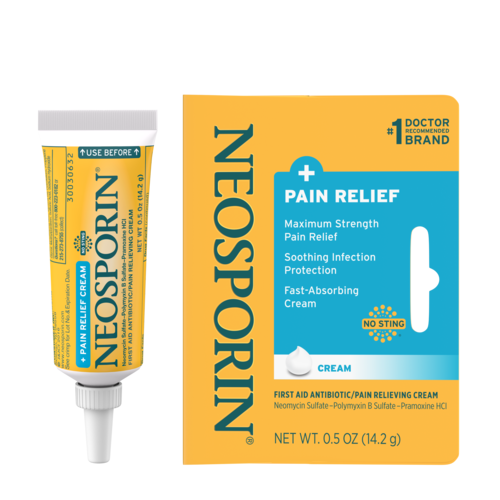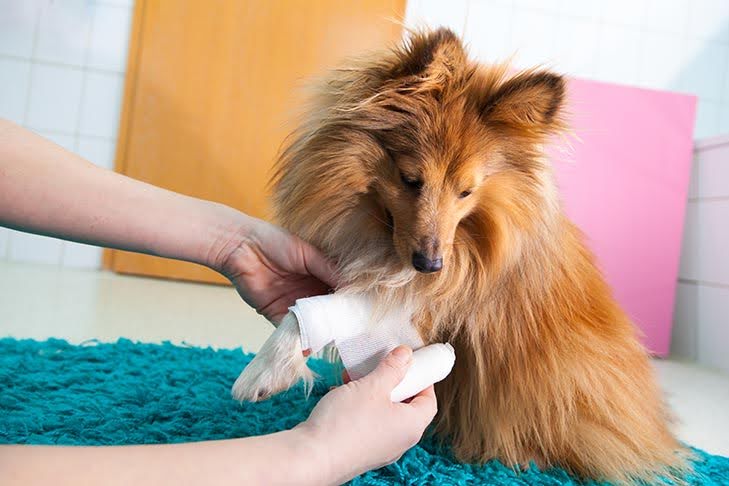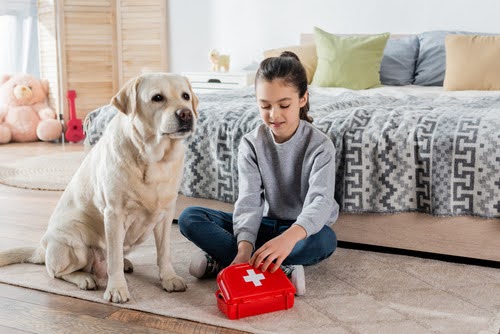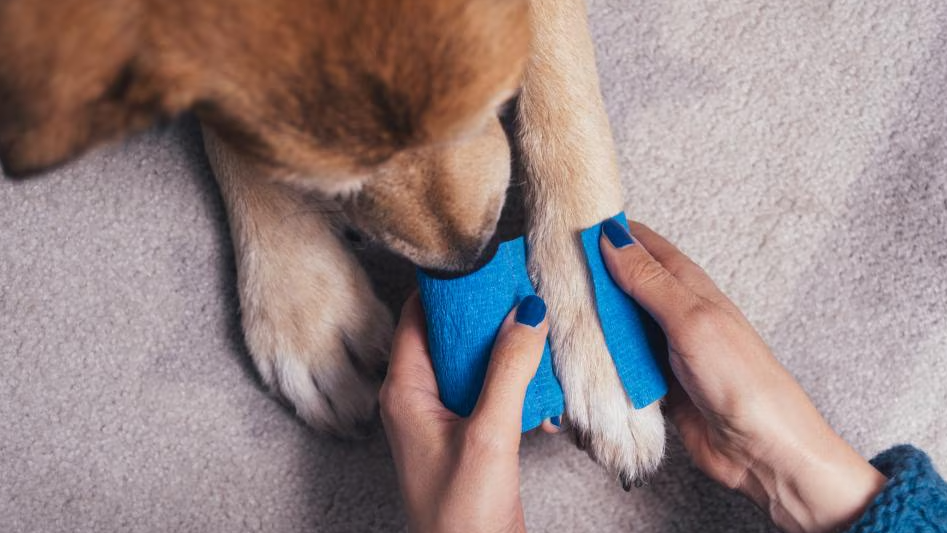TLDR;
You can use Neosporin on your dog for small, superficial cuts—but it’s not always safe, and it’s not the best option. Always consult a vet and consider pet-safe alternatives.
What Is Neosporin and How Does It Work?

Neosporin is a widely used over-the-counter antibiotic ointment designed to prevent infections in minor cuts and scrapes—in humans. While its use is common in households, its role in pet care isn’t as straightforward.
What’s in Neosporin?
- Neomycin – combats a wide range of bacteria
- Polymyxin B – prevents bacterial growth
- Bacitracin – fights skin infections by eliminating surface bacteria
Together, these ingredients work synergistically to inhibit bacterial growth and promote wound healing. Neosporin is generally safe for humans, but dogs have different biology—and that’s where the concern lies.
How It Works
Neosporin is applied topically to form a protective barrier over wounds while the antibiotics kill surface-level bacteria. This reduces the risk of infection and supports healing. However, when used on dogs, a few issues arise:
- Their skin is more sensitive than human skin
- Dogs are more likely to lick the treated area
- Some formulations contain ingredients that are toxic if ingested
At Careers Collectiv, where we teach animal welfare and care, we emphasize that human medications should never be used on pets without professional guidance.
Is Neosporin Safe for Dogs?

Technically: Sometimes. Practically: Use with caution.
While Neosporin isn’t inherently dangerous for dogs, it comes with several risks that dog owners must consider before applying it.
Potential Risks of Using Neosporin on Dogs:
- Licking behavior:
- Dogs instinctively lick wounds
- Ingesting even small amounts of Neosporin may cause:
- Vomiting
- Diarrhea
- Loss of appetite
- Lethargy
- Vomiting
- Dogs instinctively lick wounds
- Allergic Reactions:
- Common signs include:
- Redness
- Swelling
- Itching
- Rash or hives
- Redness
- Common signs include:
- Toxic Additives in Some Formulas:
- Some versions of Neosporin contain:
- Pramoxine – a topical anesthetic that can be toxic
- Lidocaine or Hydrocortisone – may lead to severe reactions or toxicity
- Pramoxine – a topical anesthetic that can be toxic
- Some versions of Neosporin contain:
Important Note: Never use “Neosporin Plus Pain Relief” on your dog—it contains pramoxine.
Canine Skin vs. Human Skin
Dogs have more permeable skin and a different pH balance than humans. What soothes human skin may irritate a dog’s. Overuse or incorrect application can cause topical irritation or slow down healing.
When Can You Use Neosporin on Dogs?

There are very limited situations where using a small amount of Neosporin might be considered appropriate.
Acceptable Use Cases:
- Small, shallow abrasions
- Light surface scrapes
- Minor insect bites or scratches
Even then, strict conditions must be met:
- The area must be clean and dry
- The dog should not be able to lick the treated spot
- Application should be limited to once or twice a day for no more than 1–2 days
Situations Where You Should Avoid Neosporin:
- Deep or puncture wounds
- Bite wounds (due to risk of internal infection)
- Burns
- Hot spots or moist dermatitis
- Around eyes, nose, or genitals
- If your dog has a history of allergic reactions
Rule of Thumb: If you wouldn’t treat the wound yourself without medical advice, don’t use Neosporin on your dog without consulting a vet.
How to Properly Apply Neosporin on a Dog

If your vet gives you the green light to use Neosporin, here’s how to do it safely.
Step-by-Step Application:
- Clean the Area
- Use clean, warm water or saline solution
- Gently pat the area dry with sterile gauze
- Apply the Ointment
- Use a cotton swab or clean finger
- Apply a thin, even layer over the wound
- Avoid surrounding healthy skin
- Prevent Licking
- Use an Elizabethan collar (cone)
- Use booties or wraps if it’s on a paw
- Distract with toys or treats until the ointment sets
- Observe the Wound
- Check daily for signs of irritation or infection
- If you see swelling, discharge, or your dog seems uncomfortable, stop use and consult a vet
Tip from Careers Collectiv: These steps are part of basic pet first aid training—every dog owner should know them.
Better Alternatives to Neosporin for Dogs

There are far safer and more effective wound care solutions made specifically for dogs.
Vet-Approved Topical Products:
- Vetericyn Plus Antimicrobial Hydrogel
- Banixx Wound Care Spray
- Zymox Topical Cream
- Silver Honey Medicated Ointment
Natural Remedies (Use with Caution):
- Pure Aloe Vera – Soothes skin, but ensure it’s 100% pure (no additives)
- Coconut Oil – Offers antibacterial benefits, but only apply if you can prevent licking
- Chamomile Tea Compresses – Soothes irritated skin and minor abrasions
What to Avoid:
- Essential oils unless prescribed by a vet
- Homemade remedies without research
- Alcohol-based solutions (they sting and delay healing)
What Vets Say About Neosporin and Dogs

The Veterinary Perspective:
Most vets agree on the following:
- Neosporin is not toxic but should be used sparingly
- Dogs that lick the product are at risk of mild to moderate digestive issues
- Prolonged use can lead to antibiotic resistance
Veterinary Recommendations:
- Always opt for pet-specific products
- Avoid using over-the-counter human medications unless specifically told otherwise
- Monitor your pet closely after using any new product.
How to Prevent Minor Injuries in Dogs

Prevention should always be the priority. Here’s how to minimize the risk of minor cuts, scrapes, or injuries:
Around the Home:
- Keep small or sharp objects out of reach
- Secure wires, glass, and metal parts
- Avoid slippery floors and sharp-edged furniture
Outdoors:
- Walk your dog in well-maintained parks or trails
- Avoid areas with thorns, broken glass, or trash
- Use a secure harness to prevent escape or tangling
During Grooming:
- Always use proper grooming tools
- Avoid grooming when your dog is anxious or restless
- Learn safe nail trimming techniques
Courses in dog grooming and first aid from Careers Collectiv cover these essential injury prevention techniques in depth.
FAQs About Neosporin and Dogs
Can you use Neosporin on a dog’s hotspot?
No. Hotspots are moist and inflamed, and Neosporin can trap moisture, worsening the infection.
What if my dog licked Neosporin?
Monitor for vomiting, diarrhea, or lethargy. A small amount is usually not fatal, but it’s best to contact your vet if symptoms occur.
Is Polysporin safer for dogs than Neosporin?
Polysporin omits neomycin, reducing the chance of allergy—but it’s still not made for dogs. Pet-specific products are safer.
How often can I apply Neosporin to my dog?
No more than once or twice daily and for no longer than 1–2 days, unless advised otherwise by your vet.
Safer Dog Wound Care Alternatives
What to Include in a Canine First Aid Kit:
- Pet-safe antibiotic ointment (Vetericyn, Banixx)
- Sterile saline rinse or wipes
- Sterile gauze pads and bandages
- Antiseptic pet spray
- Cone collar to prevent licking
Should You Use Neosporin on Your Dog?
In limited circumstances, yes—but with many caveats. It’s not your go-to solution for pet wounds.
Safer approach:
- Always consult your veterinarian
- Keep pet-safe topical treatments on hand
- Only treat truly minor injuries at home
Neosporin isn’t harmful in every case, but it’s not made for dogs, and there are better, safer options available.